Best Survival Knife, What You Need to Know
What knives do survival experts use?
That depends on the expert, and the environment they are in. I spend much of my younger years traipsing through the jungle, and the best survival knife for me was a Machete. It was extremely well suited to the environment I was in. When I started hiking and camping in the forests of Europe, I carried a much smaller knife and an axe. This was the perfect combination of cutting tools in a forest. I could have carried my machete and in a pinch, it would have done the job. But it would have required more effort cutting harder wood than a machete was designed for.
Let’s say for the sake of argument that you are in a forest type of environment. What is the best survival knife for you?
Again, it depends. I am not trying to be difficult, but there are a lot of factors to be considered. What other tools do you have available, axe, saw, or multi-tool, and of course your skill set.
With the above in mind. Let’s have a look at a couple of things that you need to be aware of when choosing a survival knife.
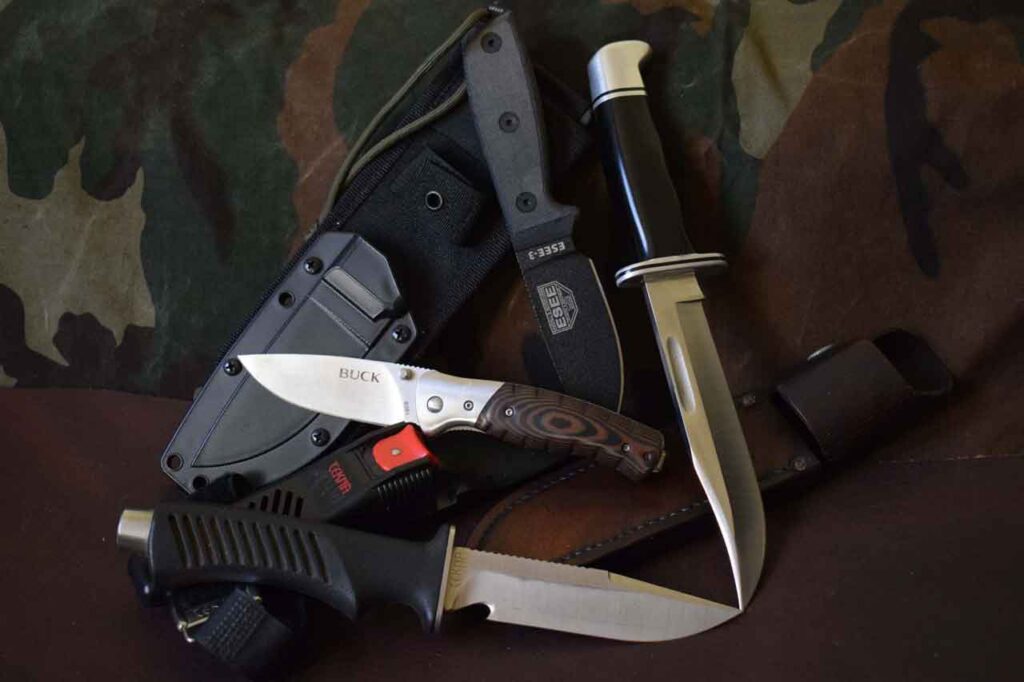
Fixed Blade Knife With A Full Tang
A survival knife needs to be sturdy, it might be your primary cutting tool, or in a worst-case scenario, your Only cutting tool. Having it fail on you might be the difference between life and death. So choose a knife that has a full tang. That means that the blade extends to the very end of the hilt. Essentially the knife is one piece of metal with a grip (handle molded or fashioned in some way) as a handle. This makes the knife much stronger than a knife with a half tang, rat tail tang, or even worst a folder.
Do NOT rely on a folder of any type as your main survival knife. They are great for EDC (everyday carry) and even for whittling, but in a survival situation. If you have a choice, always pick a fixed blade with a full tang.
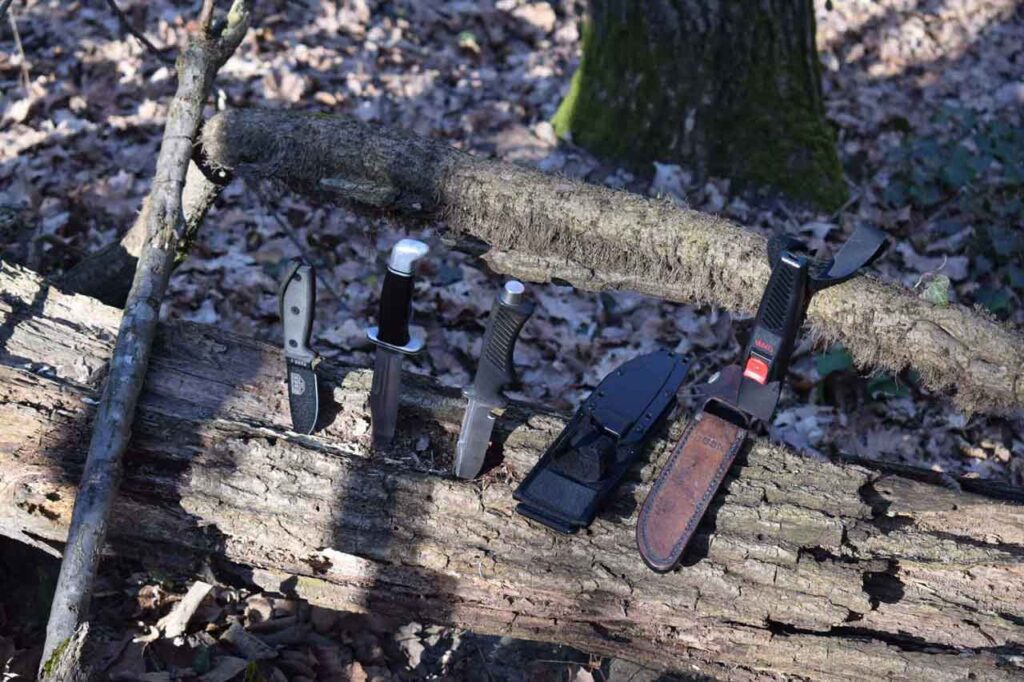
Best Material For A Survival Knife Handle
In the past, the choice of knife handles was limited to what nature provided. The most common were wood, bone, horn, leather, and mother of pearl. Some even had gemstones or semi-precious stones inlaid in the handle. Natural materials are less durable than modern-day materials such as Micarta, G-10, carbon fiber handles, aluminum, titanium, etc.
All of the natural handle materials listed above were prone to chipping, warping, and cracking. Wood, bone, leather, all the materials found in nature will get damaged after hard use. And a hard-use knife is one of the main ways that you should be describing your survival knife.
Choose a knife with synthetic material for the handle. With dozens of options out there. I decided to narrow it down to the two best-handle materials for a survival knife.
Micarta VS G10
Micarta
A durable, material made of linen, canvas, or paper and coated with a phenolic resin that is treated under heat and pressure to create a material that makes a great knife handle. It is grippy even when wet, does very well in extreme heat or cold and it is lightweight.
G10
G10 is very similar to Micarta except that it is made of woven fiberglass fabric (instead of linen, paper, or canvas) that is then soaked in epoxy resin, heat, and pressure treated to create g10. It has much the same properties as the Micarta. Accept it is more durable, more water-resistant, handles impacts, heat and cold better, etc.
The question of course is, if the g10 is superior in nearly everything, why not choose the g10 over the Micarta? Well in all of the knives I have used with a g10 handle, I have found that the Micarta feels… grippier when wet. It is a matter of preference as both of these make excellent knife handle materials.
Survival Knife Blade Material
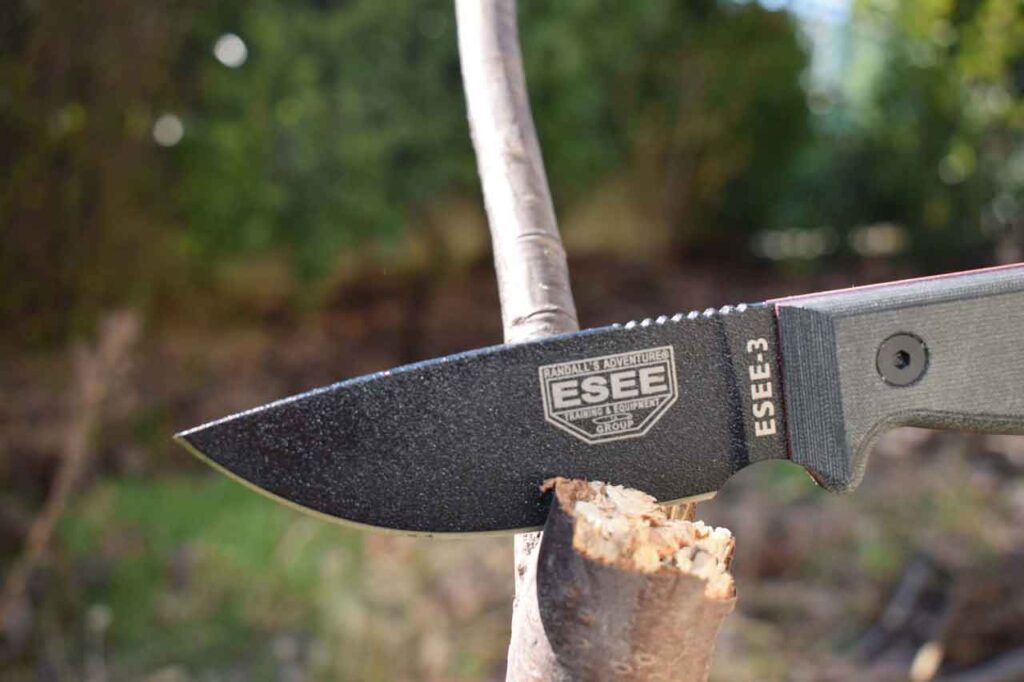
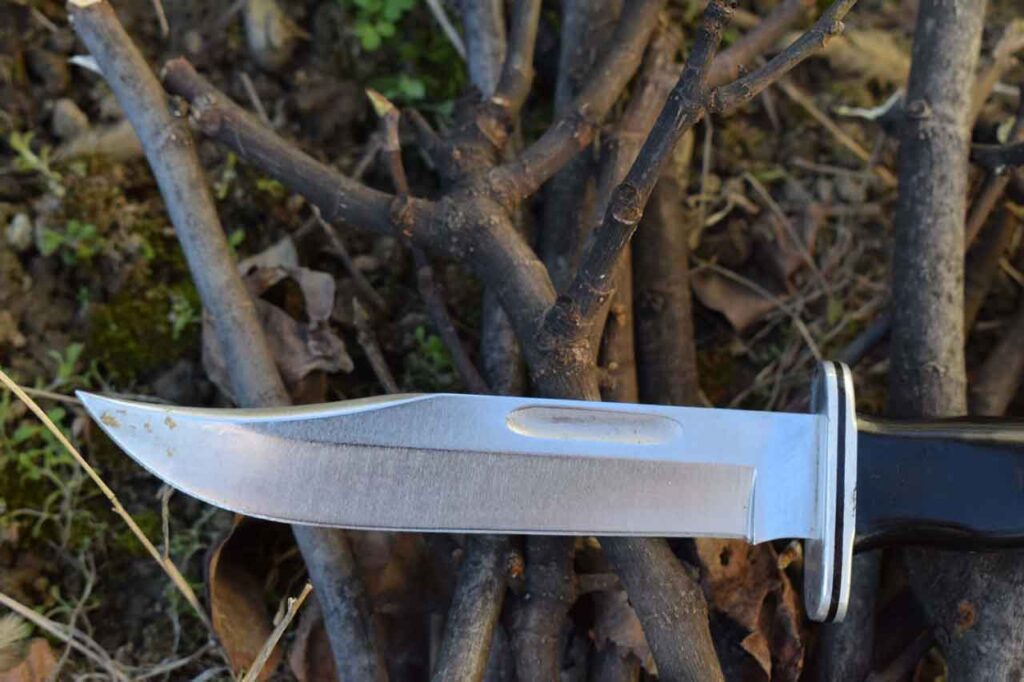
There are dozens of great survival blade materials on the market, but as in the previous statement above, the metal you choose for your survival knife depends on your environment, your skillset, and what other tools and cutting implements you have with you.
If you stay on an island or near the coast. Choose a material that has higher corrosion resistance. Such as an S90V, S30V knife, or 420HC. If rust resistance is not an issue for you. Then a high carbon material such as 1095 steel is a good choice. If you want something that is semi-stainless steel, then I would recommend a D2 knife blade material.
Premium Steels
S90V – excellent corrosion resistance, amazing sharpness retention, and a good mix of durability and flexibility.
Difficult to sharpen, quite expensive.
S30V – excellent corrosion resistance, good sharpness retention, and a decent mix of durability and flexibility. One step down from S90V, it is slightly easier to sharpen, but still quite expensive.
Medium Grade Steels
420HC – excellent corrosion resistance, holds a decent edge, is durable, flexible, and very reasonably priced. Does not hold an edge as well as the premium steels (S90C, S30V). So touch-ups will be essential to maintaining a sharp edge.
1095 – extremely durable, flexible, and can be sharpened relatively easily. Poor corrosion resistance (oiling would be necessary), but it makes an excellent blade material if looked after. The cost is reasonable.
D2 – D2 is tool steel, with excellent edge retention, very high wear resistance, is very durable, is moderately corrosion resistant, and is a good hard-use material. Difficult to sharpen (easier than S30V, S90V), medium price range.
This is a general guide to blade materials, there are numerous other materials out there. Be aware that the quality of the steel varies dramatically between brands.
A 1095 blade made by one company could be excellent. The same steel material could be terrible if made by another company.
For example, ESEE makes 1095 blades that outperform many of the more premium metals. Buck has an amazing heat treatment that makes their 440HC steel fantastic knives. Both these companies use medium-quality steel to create premium-quality products.
Which is the Best Steel for a Survival Knife? Super Steel, Premium steel, or Normal Steel?
That is totally up to you, don’t get caught up in buying the most expensive or highest-grade steel. In the past survivalists, hunters, trappers, and pioneers had to make do with what we would now consider inferior steel.
Buy what you can afford, what you are comfortable using. For many years the Buck 119 was considered a Premium Survival knife. Now it’s rarely listed as a survival knife by the “experts”. Don’t fall into the trap of gear junkies telling you what is the best.
A great budget choice would be a Morakniv, dependable, durable, and easy to sharpen. Although the budget versions are not full tang, they are good knives. If you are on a tight budget, this is a good choice.
As an Amazon Associate, We earn from qualifying purchases.
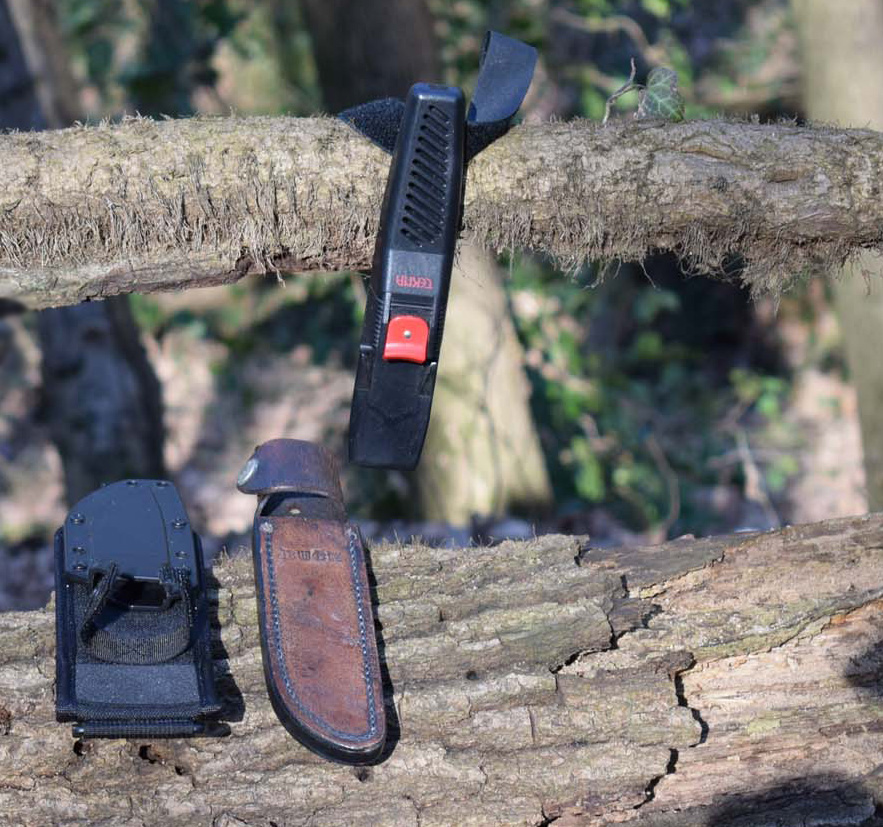
Survival Knife Sheaths
Is leather the best choice for a knife sheath? Traditionally leather was the material of choice for a knife sheath, it doesn’t affect the sharpness of the blade. If maintained, it holds up well over the years, and on top of that, it looks classy.
The disadvantage of leather is it will dry out if not well looked after, many leather sheaths are treated with chemicals that could corrode your knife if it’s stored sheathed over long periods. If you get the sheath wet, it takes a while to dry out, you need to take extra care when crossing rivers, or walking in the rain, even high humidity will rot leather that is well looked after.
Plastic
Plastic sheathes for your survival blade, are waterproof, durable, easily washed, practically maintenance-free, and usually have various mounting options. Making them very versatile when it comes to carrying options.
The disadvantage of plastic sheathes are they tend to be noisy. The knife usually rattles around in the sheath, some plastics are prone to cracking. Plastic sheaths could affect a knife’s sharpness and coating (if your blade is coated).
Kydex
Are Kydex sheaths worth buying? As with plastic, maintenance is practically non-existent, Kydex sheaths are usually molded to the knife. So they don’t rattle around as much as plastic. If it doesn’t fit perfectly it can be heated and remolded to the knife to be a perfect fit (takes a little bit of skill).
The disadvantage of Kydex is it could scratch your knife’s coating. Pulling your knife in and out of the sheath will affect the sharpness of your blade. Kydex is quite a bit more expensive than plastic.
Cordura
Cordura Knife sheath, lightweight, very stealthy, extremely reasonable price.
The disadvantage of Cordura is that it isn’t as durable as other options, it can easily be cut with a sharp knife.
My preference is leather for often-used knives as I maintain the leather by oiling and keeping it dry. But for my survival knife which sits in my bugout bag for long periods without being touched. Kydex or plastic are better options.
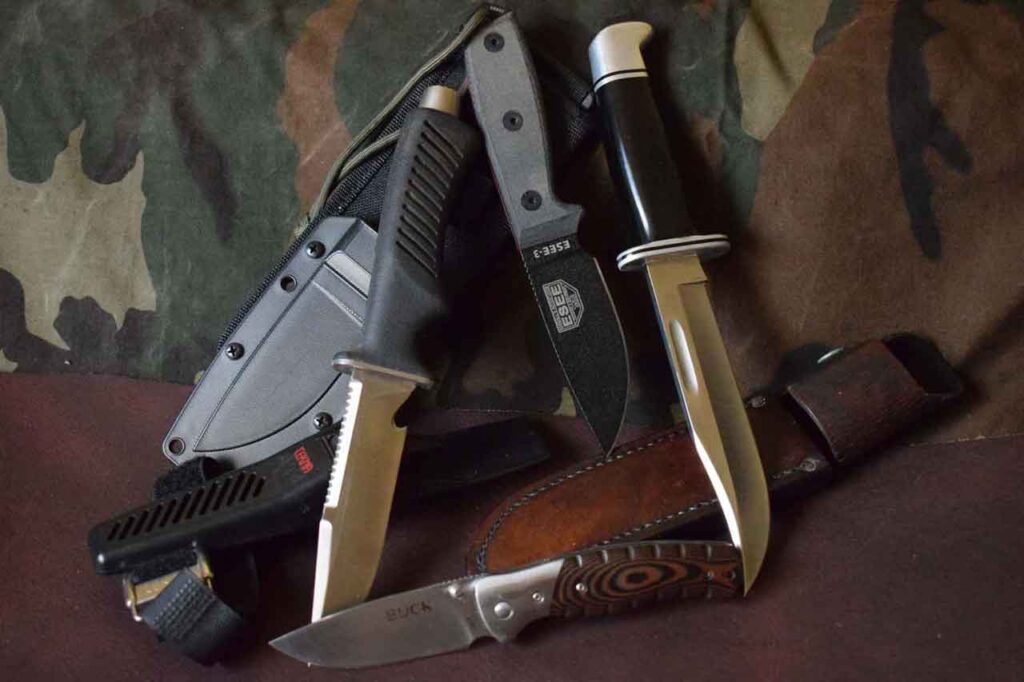
Survival Knife Length
The perfect survival knife length is based on your environment, and the skills you possess, the length people prefer is anywhere from 4 to 12 inches. Some prefer small nimble knives, others prefer choppers that can handle heavier tasks. The length will depend on what skills you have and how practiced you are at using the knife of your choice. Don’t let others decide for you, choose a knife you are comfortable with.
The Best survival knife for jungles and swamps is a machete. In Asia I carried a Tramontina machete, it was well suited to the environment, I was adept at using it and it suited me perfectly. It was 18 inches long and perfect for my needs.
Best survival knife for the European Forest, in Europe I carried a 6-inch hunting knife, perfect for cleaning game, creating traps, food prep, etc.
Best knife for bush crafting, when I go bush crafting, I carry a small and very nimble knife just under 4 inches in length. Keep in mind, I am one of those rare bushcrafters that doesn’t think batoning is necessary.
Survival Knife Thickness
The rule of thumb is 1/8 to 1/4 is a good thickness, solid enough for hard-use, and light enough to be easily carried. But in my opinion, this is just a guideline, don’t let the general consensus affect your buying decision.
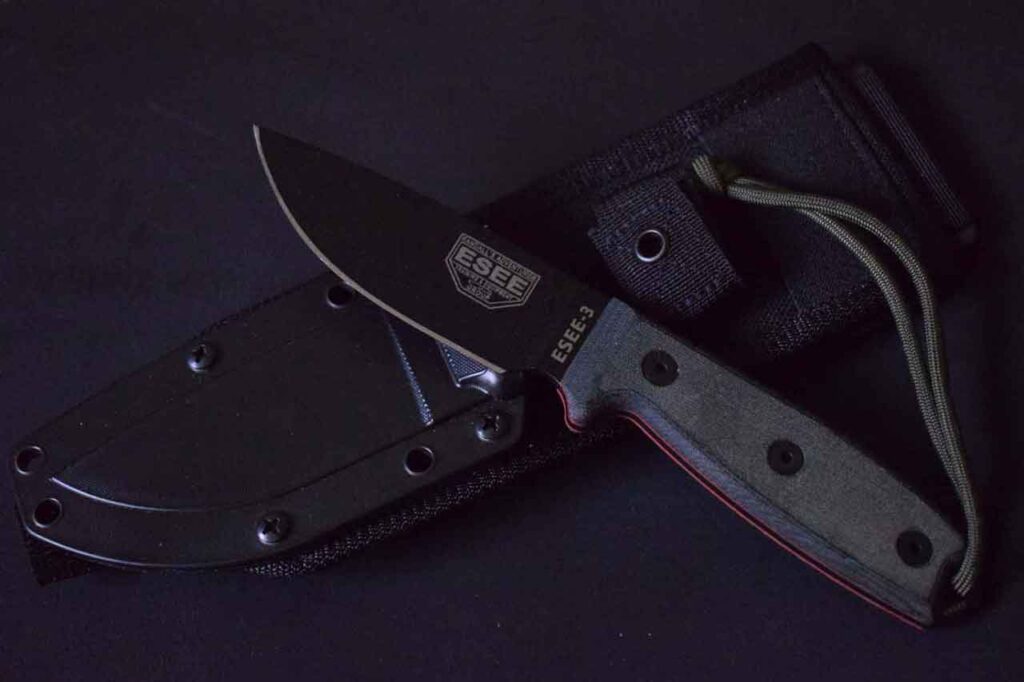
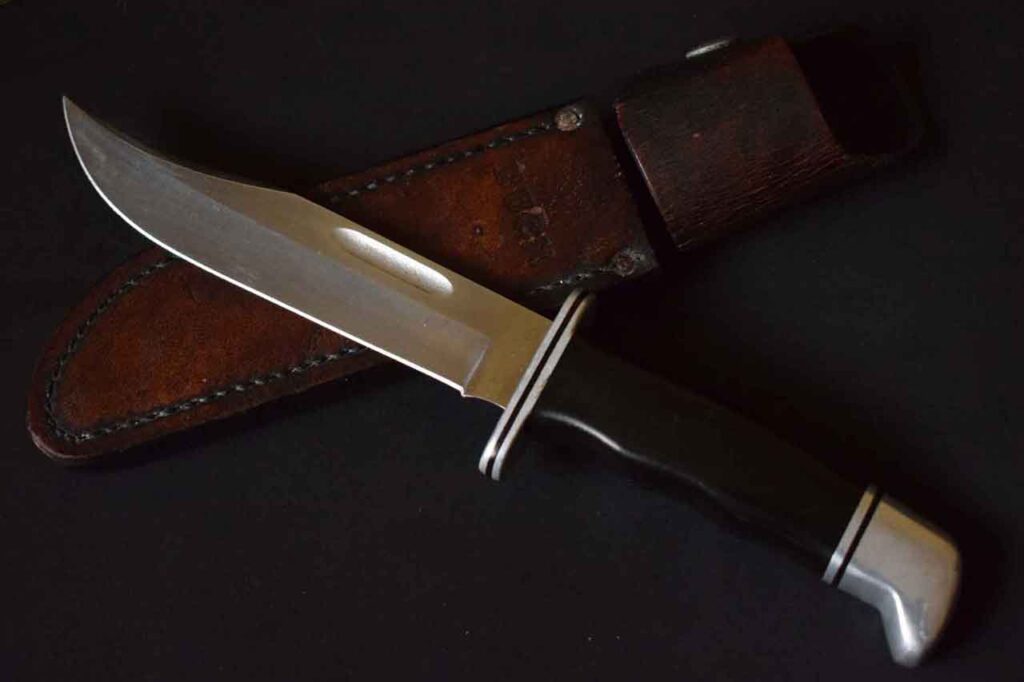
Choosing The Best Survival Knife
In my opinion, there are a lot of variables, most notably you… you are the biggest variable, choose a durable knife, suited to your environment, that you are comfortable handling. Not too heavy for you to carry for long periods, not too long that it is unwieldy for you, and most important of all, practice using it for as many tasks as you can think of. Setting up traps, food prep, field dressing game, etc.
Short Answer: the best survival knife is one you are comfortable using, just make sure that it is durable, sharp, and suited to your environment. Use your knife, practice using it for different tasks, sharpen it, dull it through hard use, sharpen it, hone it. Keep on doing this and if the knife never fails you. You got a survival knife.
What Knives I Carry
I carry 2 knives in my Bug-out Bag, an ESEE 3, and a Buck 119, I know some people will say that’s too much. But I like the redundancy and both these knives have been through a lot with me. The ESEE 3 is a replacement for my old ESEE that I gave away when I moved to Europe, it’s a twin of the one I had. Except this one is brand spanking new, and came with a Molle attachment that I can fit the ESEE sheath onto, the Molle sheath is pretty danged good, a worthwhile addition IMO.
Survival Knives to Avoid
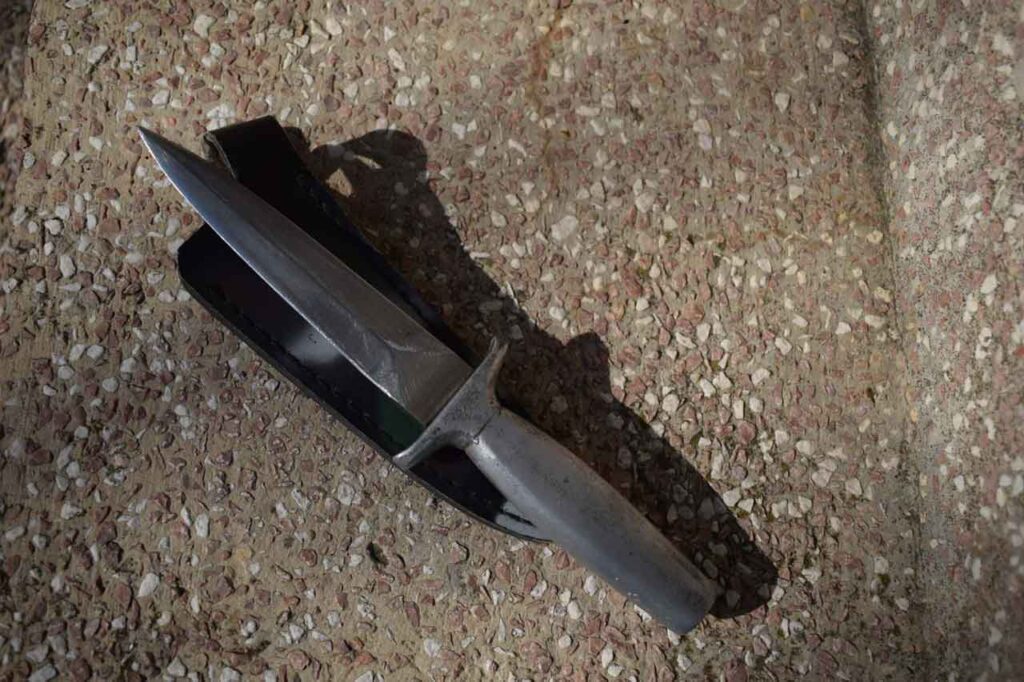
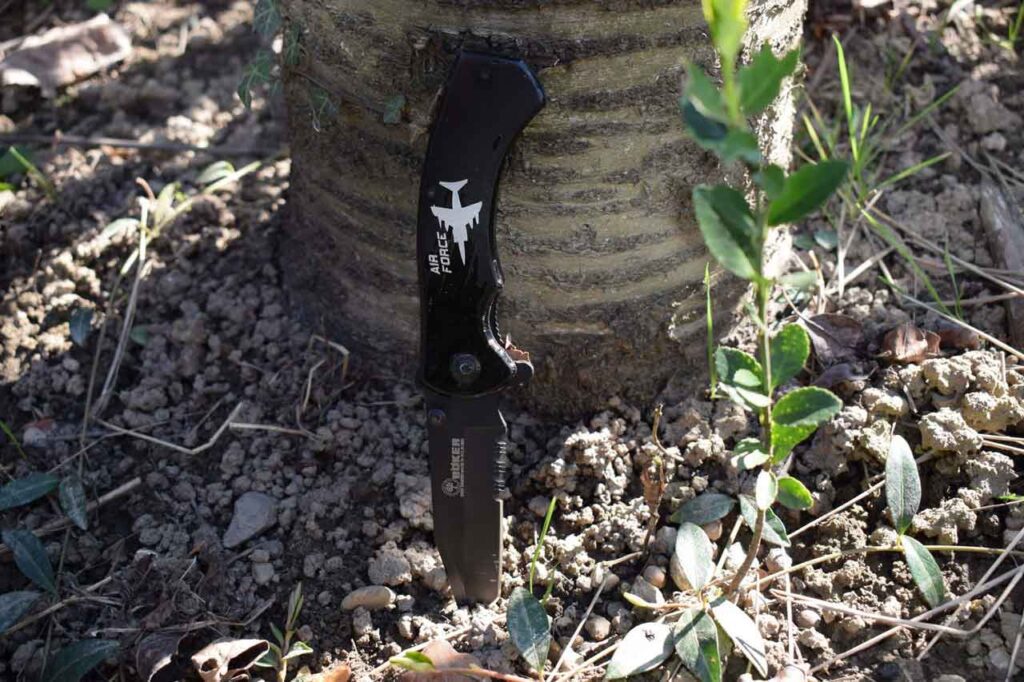
Hollow-handled knives are either too fragile or a big chunk of metal that is too heavy.
Rat tanged knives, a rat-tang means that the tang (the part of metal that is inside the handle of your knife, tapers off resembling a rat’s tail).
Double-edged knives look great but are not practical, try carving or whittling with a double-edged blade and you will quickly realize that they are difficult to use.
NEVER use a folding knife as a survival knife. A survival situation means that your knife will be put to hard-use, and folders are not designed for that. Although there is no harm in carrying a folder as a handy little backup to your main survival knife.
Karambit as a survival knife, I think not. The curved blade makes it hard to use for everyday tasks.
I should probably mention, I have a few EDC items that go with me everywhere. When I grab my B.O.B bag, on me I will have a small folder (most likely my Buck Selkirk folder) as well as a Leatherman (Sidekick) multitool. Always have a Multitool they ARE so danged handy.
How many knives do you have in your B.O.B, and what make and model?